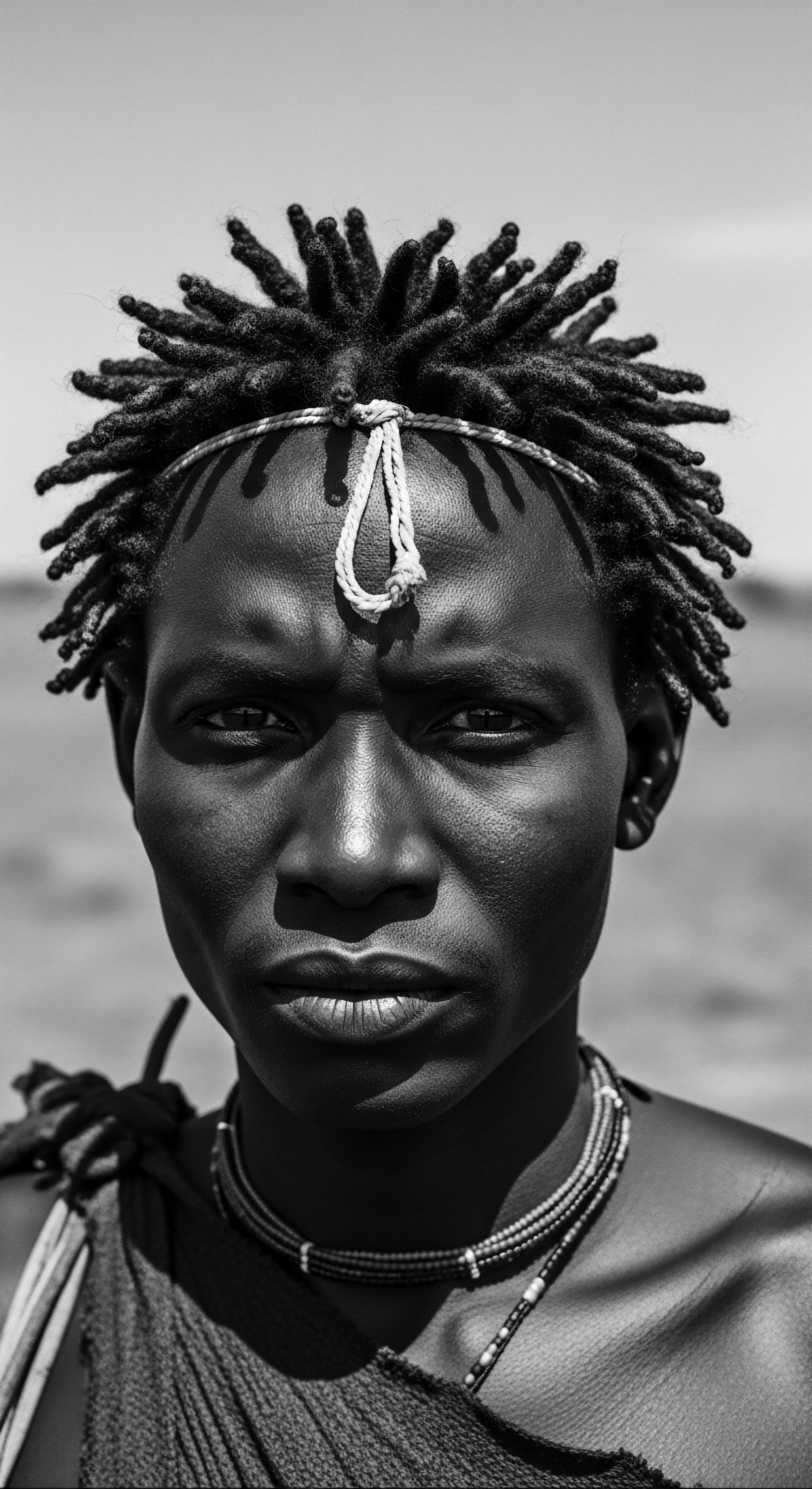
Fundamentals
The concept of Mixed-Race Hair extends beyond a mere biological classification; it represents a profound intersection of genetic inheritance, cultural expression, and ancestral wisdom. It is a living testament to human migration, connection, and the beautiful variability within the human family. At its simplest, Mixed-Race Hair refers to the hair phenotype arising from the blending of diverse genetic lineages, often manifesting a distinctive array of characteristics from multiple ancestral hair types.
This can encompass a unique combination of curl patterns, ranging from loose waves to tight coils, alongside variations in density, porosity, and strand thickness. This inherent diversity distinguishes it, rendering each strand a story of lineage.
From the earliest epochs of human existence, as communities traversed continents and encountered one another, the natural blending of populations shaped the very fabric of human diversity. Ancestral communities, long before the rigid categorizations of modern racial constructs, observed and understood the spectrum of hair variations within their midst. They developed intricate, localized care practices, deeply attuned to the specific needs of these varied textures.
The initial recognition of Mixed-Race Hair was not a scientific pronouncement, but an intuitive understanding, born from observation and lived experience within these ancient communal settings. It was a recognition of a distinct hair experience, calling for specific attention and traditional remedies.
Mixed-Race Hair stands as a living testament to genetic blending, cultural expression, and the enduring wisdom of ancestral care practices across diverse lineages.
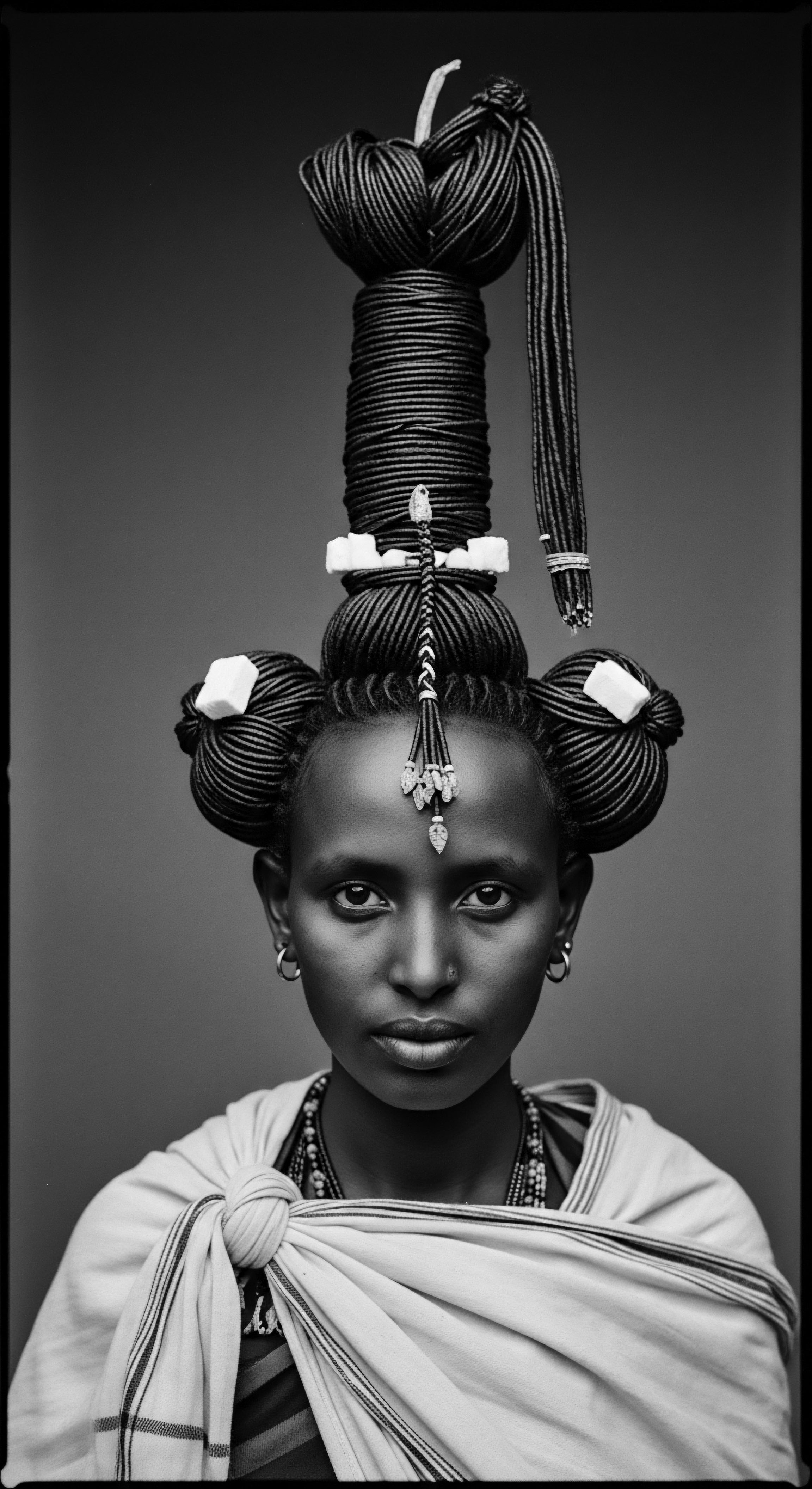
Echoes from the Source ❉ Early Ancestral Understanding
In ancient African societies, where hair held immense spiritual and social weight, variations in texture were acknowledged and revered. The rich tapestry of African hair types, from the straightest to the most tightly coiled, was seen as a manifestation of the divine and a marker of identity, status, and community affiliation. When these communities interacted with others, whether through trade, migration, or intermarriage, the resulting hair textures were met not with judgment, but with an adaptive spirit of care.
Knowledge of botanicals, oils, and styling techniques, passed down through generations, was applied to address the specific qualities of each hair type, including those exhibiting blended characteristics. This historical lens shows an approach grounded in observation and practical application, a reverence for hair’s intrinsic nature.
- Botanical Wisdom ❉ Ancestral communities across various continents understood the healing and conditioning properties of plants, applying this wisdom to all hair types, including those exhibiting blended characteristics.
- Protective Styling ❉ Braiding, twisting, and intricate updos were not merely aesthetic choices; they were vital protective measures, safeguarding diverse hair textures from environmental elements and promoting hair health.
- Communal Care Rituals ❉ Hair care was often a communal activity, fostering intergenerational knowledge transfer and strengthening social bonds, particularly in nurturing the unique needs of blended hair textures.
The deep heritage of hair care within these early communities underscores a profound understanding of hair as a living entity, deserving of thoughtful attention. The initial ‘definition’ of Mixed-Race Hair, then, was less about scientific nomenclature and more about a communal recognition of its distinct physical properties and the subsequent development of tailored care practices. This foundational understanding laid the groundwork for the intricate hair traditions that would continue to evolve across centuries and continents, demonstrating an adaptive wisdom concerning hair.
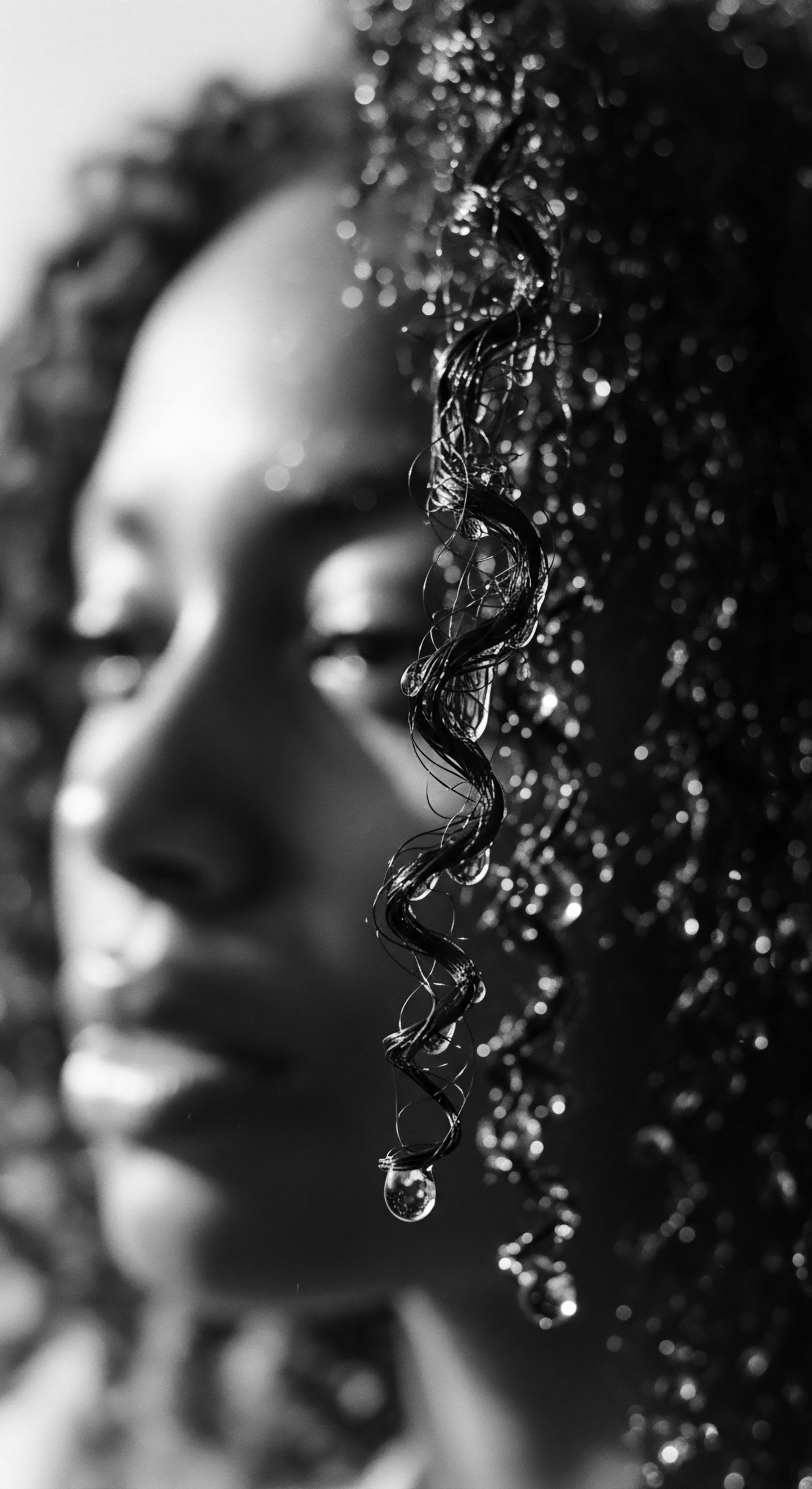
The Ancestral Palette of Hair
Understanding the earliest perceptions of Mixed-Race Hair requires a journey back to the very origins of human hair diversity. Different environments across the globe fostered distinct hair characteristics, from the straight, thick strands common in East Asian populations, to the varied waves and curls of European lineages, and the rich spectrum of coils and kinks found across African ancestries. As human populations expanded and intermingled, the genetic instructions for these hair types began to combine, giving rise to hair textures that held characteristics from more than one ancestral group. This biological reality was simply a part of the human condition, observed and adapted to by early societies.
The significance of this genetic intermingling was not lost on ancient peoples. Their hair care practices were often deeply interwoven with their spiritual beliefs, social structures, and knowledge of the natural world. For instance, in many West African cultures, hair was viewed as a conduit to the divine, a spiritual antenna connecting individuals to their ancestors and the cosmos.
The particular patterns and textures, including those that presented as a blend, were interpreted as unique expressions of this connection. The methods of cleansing, conditioning, and styling were therefore sacred rituals, passed down through oral traditions and communal demonstrations, ensuring that all hair, regardless of its specific texture, received the respectful attention it merited.

Intermediate
The meaning of Mixed-Race Hair, at an intermediate level of comprehension, deepens from its fundamental biological presence to its active role in shaping cultural practices and personal identity across generations. This phase of understanding acknowledges how heritage practices involving Mixed-Race Hair have not merely persisted but have dynamically adapted and transformed through the crucible of history. It is a story of resilience, innovation, and the persistent pursuit of self-expression amidst complex societal landscapes.
The historical currents of colonialism, the transatlantic slave trade, and subsequent global migrations profoundly reshaped demographic landscapes, giving rise to diverse mixed-race populations across the Americas, the Caribbean, and Europe. Within these new contexts, Mixed-Race Hair often became a visible marker of complex identity, a site where different ancestries converged. This visibility, at times, led to social hierarchies and the unfortunate imposition of Eurocentric beauty standards, which devalued textured hair. Yet, simultaneously, it spurred a powerful impetus within Black and mixed-race communities to preserve, adapt, and invent hair care rituals that honored their unique hair types.
Intermediate understanding of Mixed-Race Hair reveals its dynamic role in cultural practices and identity, showcasing how heritage care traditions have adapted through history.
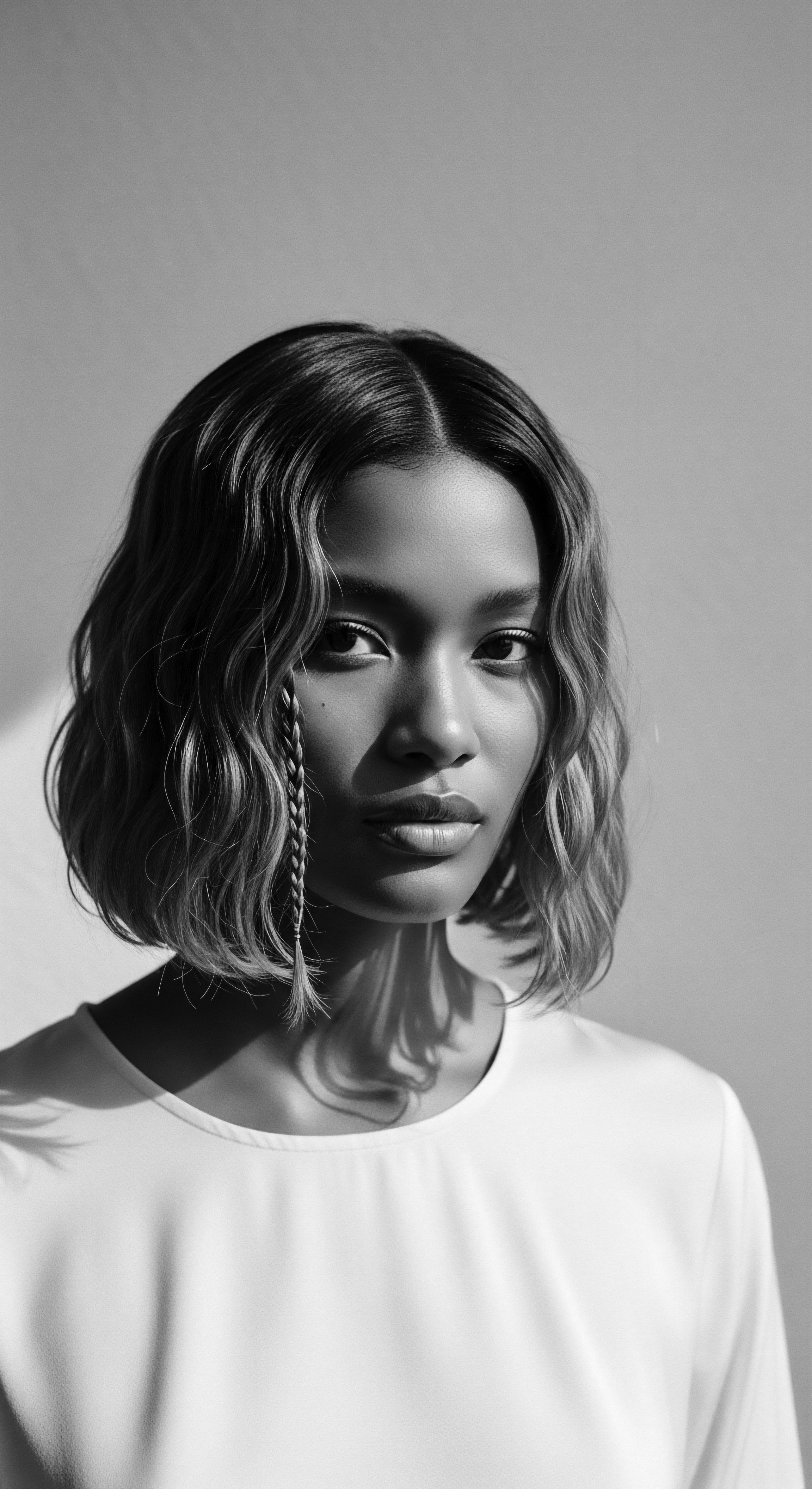
The Tender Thread ❉ Continuity and Adaptation of Heritage
The traditions of hair care, often rooted in African ancestral wisdom, were not abandoned but were ingeniously modified to suit the varied textures emerging from mixed heritages. Ingredients like shea butter, coconut oil, and various plant-based extracts, long revered for their nourishing properties in African communities, found new life and application in the diaspora. These practices became a tender thread, connecting individuals to their past, providing comfort, and serving as a quiet act of defiance against imposed beauty norms. The rituals surrounding hair care became deeply personal, yet communally significant, acts of self-preservation and cultural affirmation.
| Traditional Practice/Ingredient Shea Butter Application |
| Adaptation/Significance for Mixed-Race Hair Ancestrally used for skin and hair, its emollient properties became vital for conditioning diverse textures, particularly those with higher porosity, offering deep moisture. |
| Traditional Practice/Ingredient Co-Washing (Water-based cleansing) |
| Adaptation/Significance for Mixed-Race Hair While not termed "co-washing," the principle of gentle, water-based cleansing and conditioning to preserve natural oils was a common ancestral practice, proving essential for preventing dryness in blended textures. |
| Traditional Practice/Ingredient Protective Braiding Styles |
| Adaptation/Significance for Mixed-Race Hair Elaborate braiding, often infused with oils, served to protect delicate, blended strands from breakage and environmental damage, preserving length and health. |
| Traditional Practice/Ingredient Herbal Rinses |
| Adaptation/Significance for Mixed-Race Hair Infusions of specific herbs (e.g. hibiscus, rosemary) were used for scalp health and shine, adaptable for all hair types, including those requiring gentle, natural enhancement. |
| Traditional Practice/Ingredient These methods illustrate the continuous flow of ancestral wisdom, adapting to the specific needs of Mixed-Race Hair across generations. |
Consider the vibrant hair culture of the Caribbean, a true crucible of mixed heritage. Here, Indigenous, African, European, and Asian influences coalesced, giving birth to unique hair types and, consequently, unique care traditions. The wisdom of local botanicals, combined with inherited African techniques, led to a distinct approach to hair health and styling.
Hair was not just adorned; it was nurtured with a deep, intuitive understanding of its needs, passed from grandmother to mother to child. This rich lineage of practical knowledge represents a profound aspect of the Mixed-Race Hair experience, one that speaks to adaptability and the enduring power of inherited wisdom.

The Language of Strands ❉ Identity and Belonging
Beyond the physical care, Mixed-Race Hair has played a significant role in defining individual and collective identity. For many, their hair is a visible connection to their diverse ancestries, a source of pride and a marker of belonging. The decision to wear one’s natural texture, or to style it in a particular way, often carries layers of cultural and historical significance. It speaks to a conscious choice to honor one’s heritage, to celebrate the uniqueness of one’s strands, and to reject external pressures to conform to a singular, often Eurocentric, standard of beauty.
This journey of self-acceptance and affirmation through hair is a powerful one. It represents a reclaiming of narrative, a celebration of the beauty that arises from the blending of cultures. The ongoing dialogue around Mixed-Race Hair in contemporary society reflects this journey, as individuals and communities seek to understand, appreciate, and care for their hair in ways that honor its complex lineage. The intermediate understanding of Mixed-Race Hair, then, acknowledges its journey from elemental biology to a profound symbol of cultural continuity and personal affirmation, a testament to the resilience of heritage.
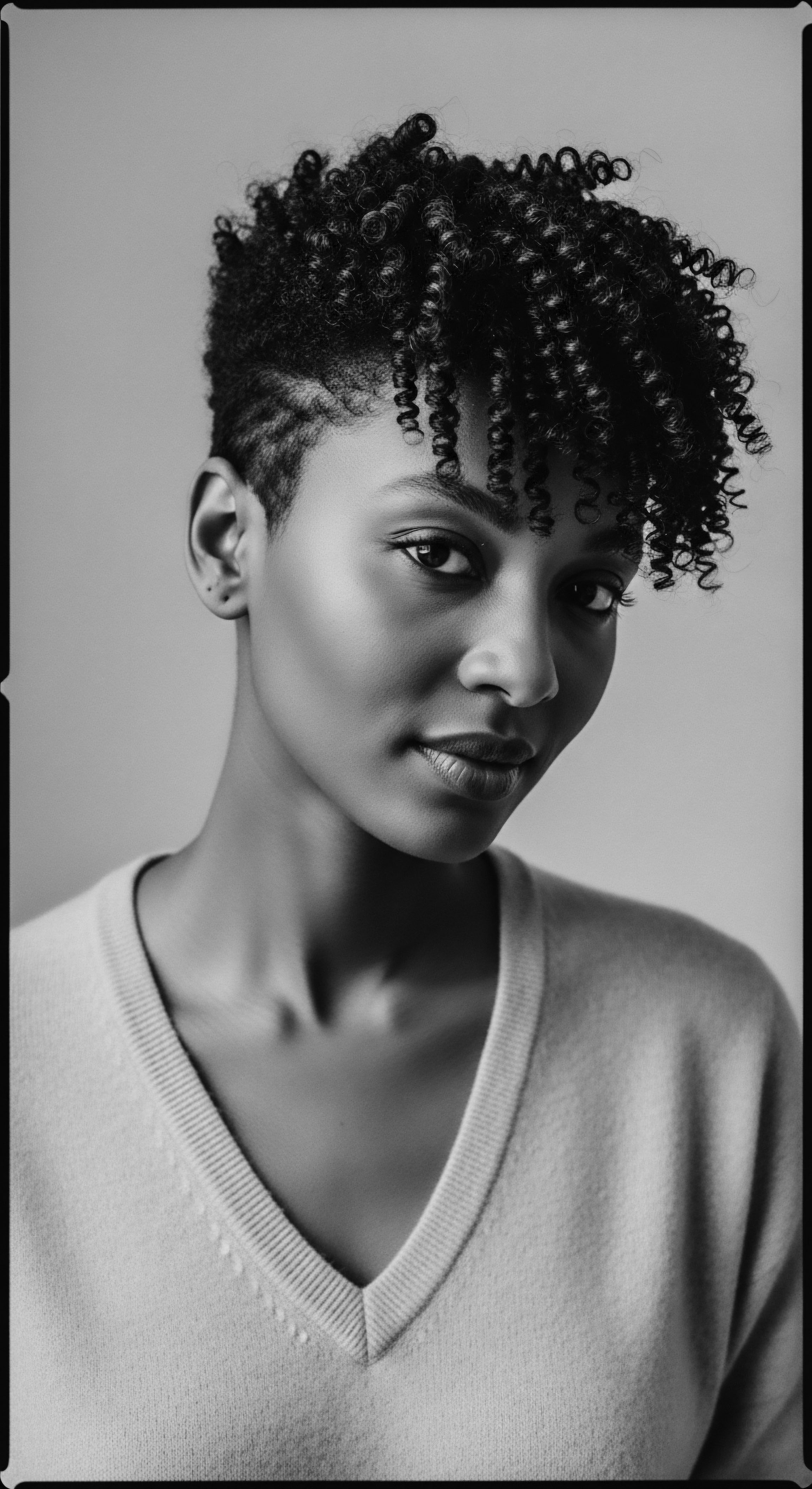
Academic
The advanced interpretation of Mixed-Race Hair moves beyond superficial observation, offering a compound, deeply insightful explication of its full significance within the intricate tapestry of textured hair heritage, its ongoing evolution, and its compelling scientific validation. From an academic perspective, Mixed-Race Hair is not merely a descriptive term; it is a complex biopsychosocial phenomenon, reflecting the interplay of specific genetic polymorphisms, profound historical forces, and the dynamic construction of identity within diasporic communities. It serves as a potent lens through which to examine the enduring legacy of human migration, the fluidity of racial categorization, and the persistent quest for self-determination.
The meaning of Mixed-Race Hair, at this expert level, is thus understood as a phenotype resulting from the inheritance of genetic markers associated with varying hair characteristics from distinct ancestral populations. This genetic blending often leads to a unique combination of curl patterns (e.g. Type 2, 3, and 4 textures appearing on the same head), porosities, and densities, presenting a distinct set of care requirements and aesthetic possibilities. The elucidation of this phenomenon necessitates a multi-disciplinary approach, drawing from genetics, anthropology, sociology, and the burgeoning field of critical race studies.
Academically, Mixed-Race Hair is a complex biopsychosocial phenomenon, reflecting genetic polymorphisms, historical forces, and dynamic identity construction within diasporic communities.
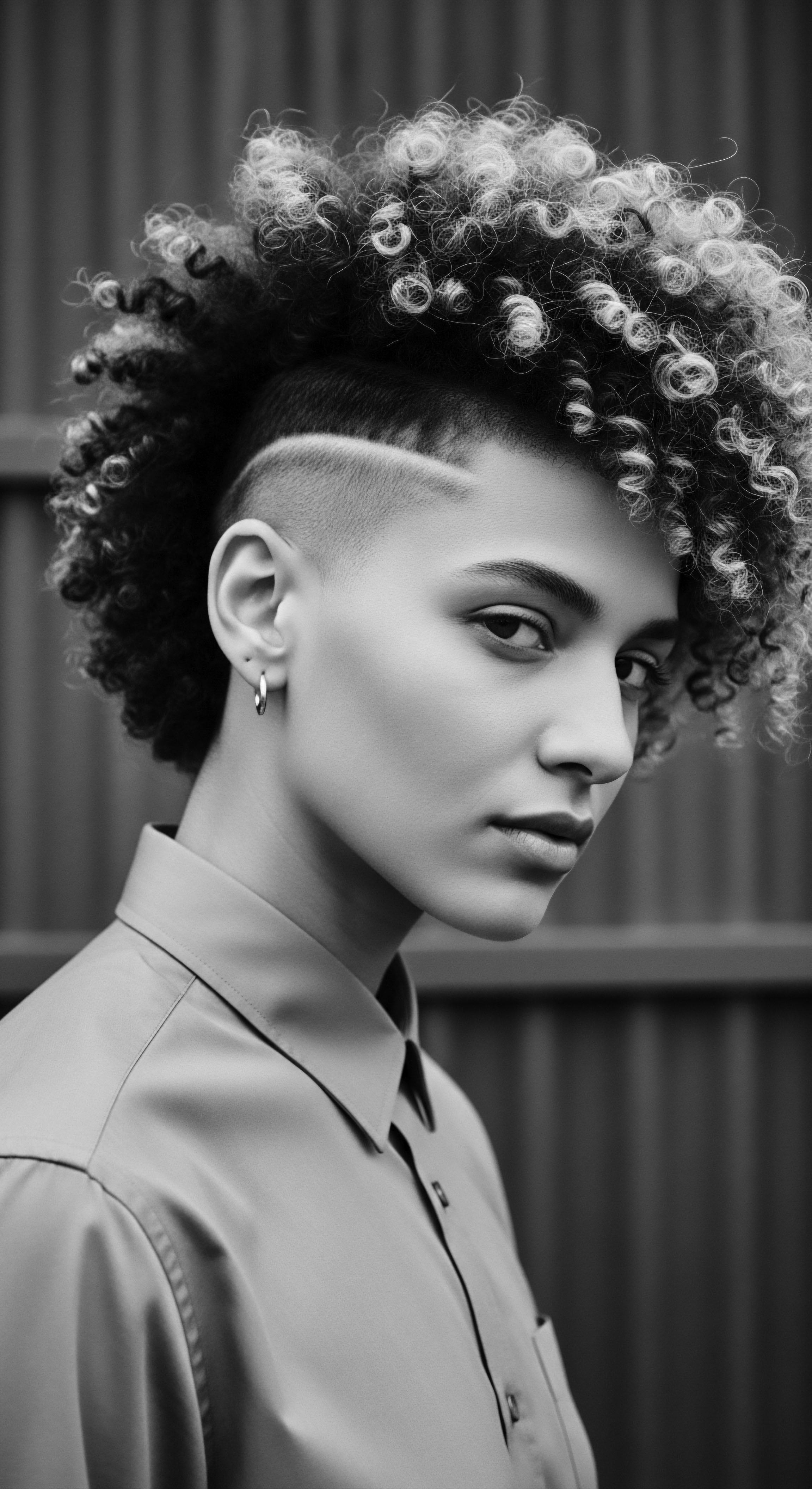
The Unbound Helix ❉ Genetic Underpinnings and Societal Constructs
From a biological standpoint, the variability in hair texture is attributed to specific genetic variations. For instance, the EDAR Gene (Ectodysplasin A Receptor) plays a significant role in determining hair thickness and straightness, with specific alleles more prevalent in East Asian populations. Similarly, variations in genes like TCHH (Trichohyalin) and KRTAP (Keratin Associated Proteins) are linked to curl patterns and hair strength, with particular distributions across different global populations (Brand, 2018).
When individuals with diverse genetic backgrounds reproduce, their offspring inherit a mosaic of these genetic instructions, leading to the varied and often unpredictable characteristics observed in Mixed-Race Hair. This genetic legacy, however, is not simply a biological fact; it is imbued with social and historical weight.
The psychosocial impact of Mixed-Race Hair has been a profound area of academic inquiry. Historically, within the context of colonialism and chattel slavery, hair texture became a significant marker in the construction of racial hierarchies. The concept of “good hair” (often equated with straighter, looser curl patterns) versus “bad hair” (tighter coils) emerged as a tool of social stratification, designed to privilege proximity to whiteness and to oppress those with more visibly African hair textures.
This insidious dichotomy created deep psychological wounds, influencing self-perception, identity formation, and even economic opportunities within Black and mixed-race communities for centuries (Patton, 2006). The ongoing legacy of these biases continues to manifest in various forms of hair discrimination, highlighting the enduring societal implications of hair texture.
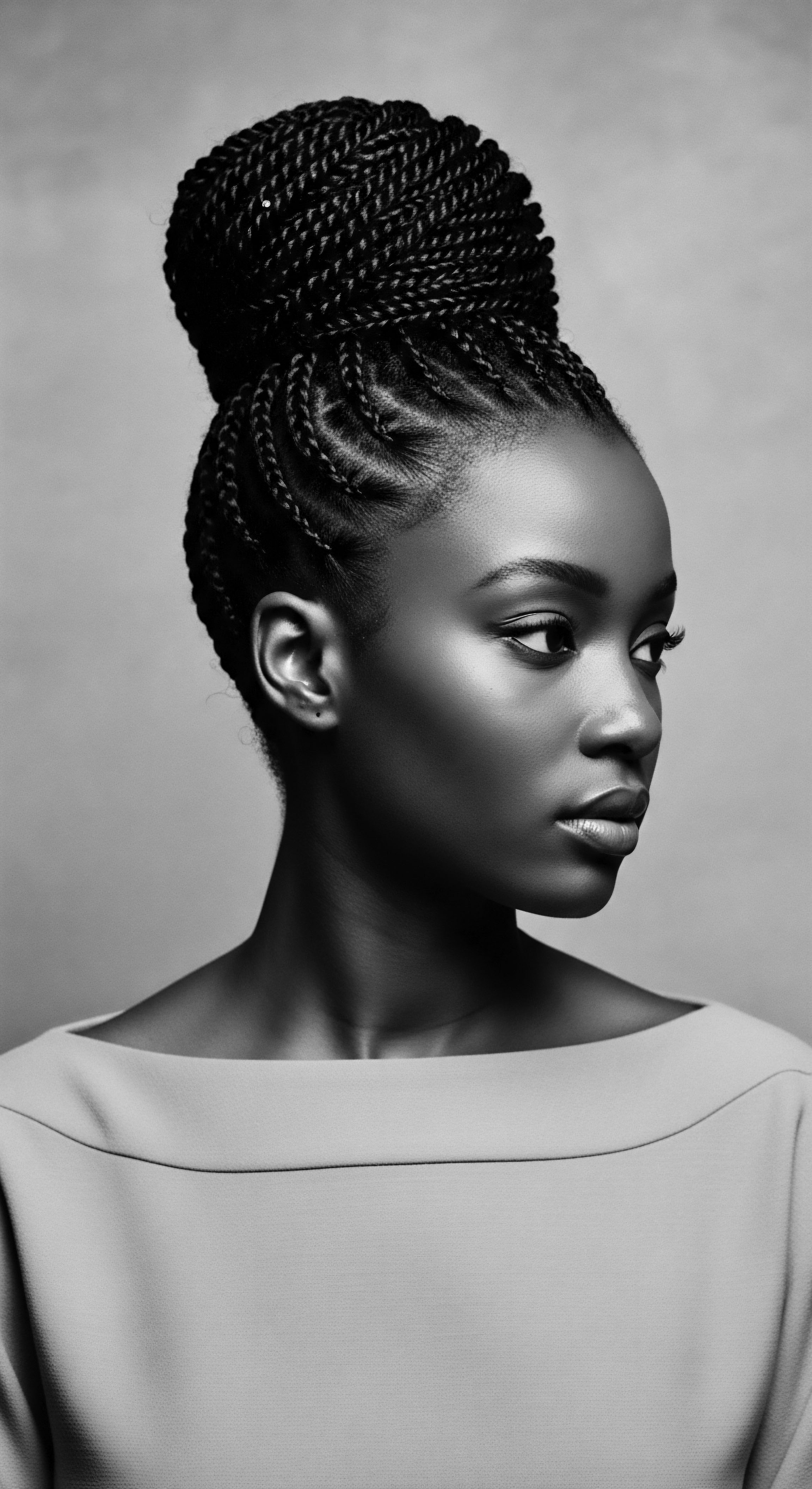
A Case in Point ❉ The Louisiana Creole Hair Traditions
To illustrate the profound interplay of genetics, history, and cultural adaptation, one may consider the distinctive hair traditions that arose within the Louisiana Creole Community. This community, forged from the complex intermingling of African, French, Spanish, and Indigenous ancestries, developed unique hair textures that often presented a blend of fine, wavy, curly, and coily strands. Faced with the societal pressures of both colonial hierarchies and the pervasive “good hair” ideology, Creole women, in particular, became adept at sophisticated hair styling and care.
The tignon laws, enacted in Spanish colonial Louisiana in the late 18th century, mandated that Creole women of color cover their hair with a headwrap. This discriminatory measure, intended to signify their perceived lower social status and to obscure their beauty, inadvertently sparked a powerful act of resistance and cultural innovation. Instead of diminishing their presence, Creole women transformed the tignon into an elaborate fashion statement, using vibrant fabrics, intricate tying techniques, and often adorning them with jewels.
While their natural hair was concealed in public, the underlying care for their diverse textures continued within the privacy of their homes, often employing traditional African and Caribbean remedies alongside European styling tools. This historical example reveals how the Mixed-Race Hair experience, even under duress, fostered remarkable resilience and creative expression (Johnson, 2013).
The resilience demonstrated by the Louisiana Creole community mirrors broader patterns of resistance and affirmation within the African diaspora. The Natural Hair Movement, which gained significant momentum in the late 20th and early 21st centuries, stands as a contemporary reclamation of identity and heritage. It directly challenges Eurocentric beauty standards by celebrating the inherent beauty and versatility of all textured hair, including Mixed-Race Hair. Legal frameworks, such as the CROWN Act (Creating a Respectful and Open World for Natural Hair) in the United States, which prohibits discrimination based on hair texture or protective hairstyles, represent a critical societal shift.
These legislative efforts acknowledge the deep historical roots of hair discrimination and work to dismantle its contemporary manifestations, allowing individuals to wear their hair, including their blended textures, without fear of professional or social reprisal. This progression signifies a growing recognition of hair as an integral component of cultural identity and self-expression, particularly for those with Mixed-Race Hair.
- Genetic Mosaicism ❉ Mixed-Race Hair exemplifies the complex inheritance patterns of multiple hair-related genes, resulting in a unique combination of curl type, density, and porosity.
- Socio-Historical Construction ❉ The perception and valuation of Mixed-Race Hair have been profoundly shaped by historical power dynamics, particularly those stemming from colonial legacies and racial hierarchies.
- Identity Reclamation ❉ Contemporary movements, such as the Natural Hair Movement, represent a powerful assertion of identity, celebrating the intrinsic beauty and cultural significance of all textured hair, including blended types.
The advanced comprehension of Mixed-Race Hair thus transcends simple description. It offers a framework for understanding the intricate interplay of biological inheritance, historical oppression, and the enduring human spirit of cultural preservation and self-affirmation. Its study provides profound insights into the construction of race, the evolution of beauty standards, and the power of hair as a symbol of individual and collective heritage.

Reflection on the Heritage of Mixed-Race Hair
The journey through the nuanced understanding of Mixed-Race Hair reveals more than just a biological phenomenon; it unveils a profound narrative etched into the very fibers of our being. Each strand, with its unique curl, its particular porosity, its distinct resilience, carries the echoes of countless generations, a silent testament to journeys taken, cultures merged, and wisdom passed down. This is the very Soul of a Strand ❉ a living archive of heritage, constantly evolving, yet deeply rooted in the past.
The exploration of Mixed-Race Hair, from its elemental biology and ancient practices to its role in voicing identity and shaping futures, underscores a continuous thread of human experience. It speaks to the ingenuity of ancestral communities who intuitively understood the diverse needs of hair and crafted holistic care rituals from the bounty of the earth. It reminds us of the resilience of those who, despite historical adversities, transformed symbols of oppression into emblems of beauty and resistance. It stands as a vibrant affirmation of the enduring power of cultural memory and the unwavering spirit of self-acceptance.
As we gaze upon the diverse textures that define Mixed-Race Hair, we are invited to appreciate not only its physical characteristics but also the rich, layered stories it tells. It is a reminder that beauty is found in authenticity, in the celebration of one’s unique lineage, and in the profound connection to the wisdom of those who came before us. This living heritage, embodied in every coil and wave, continues to inspire, to educate, and to bind us to a shared human story, one strand at a time.
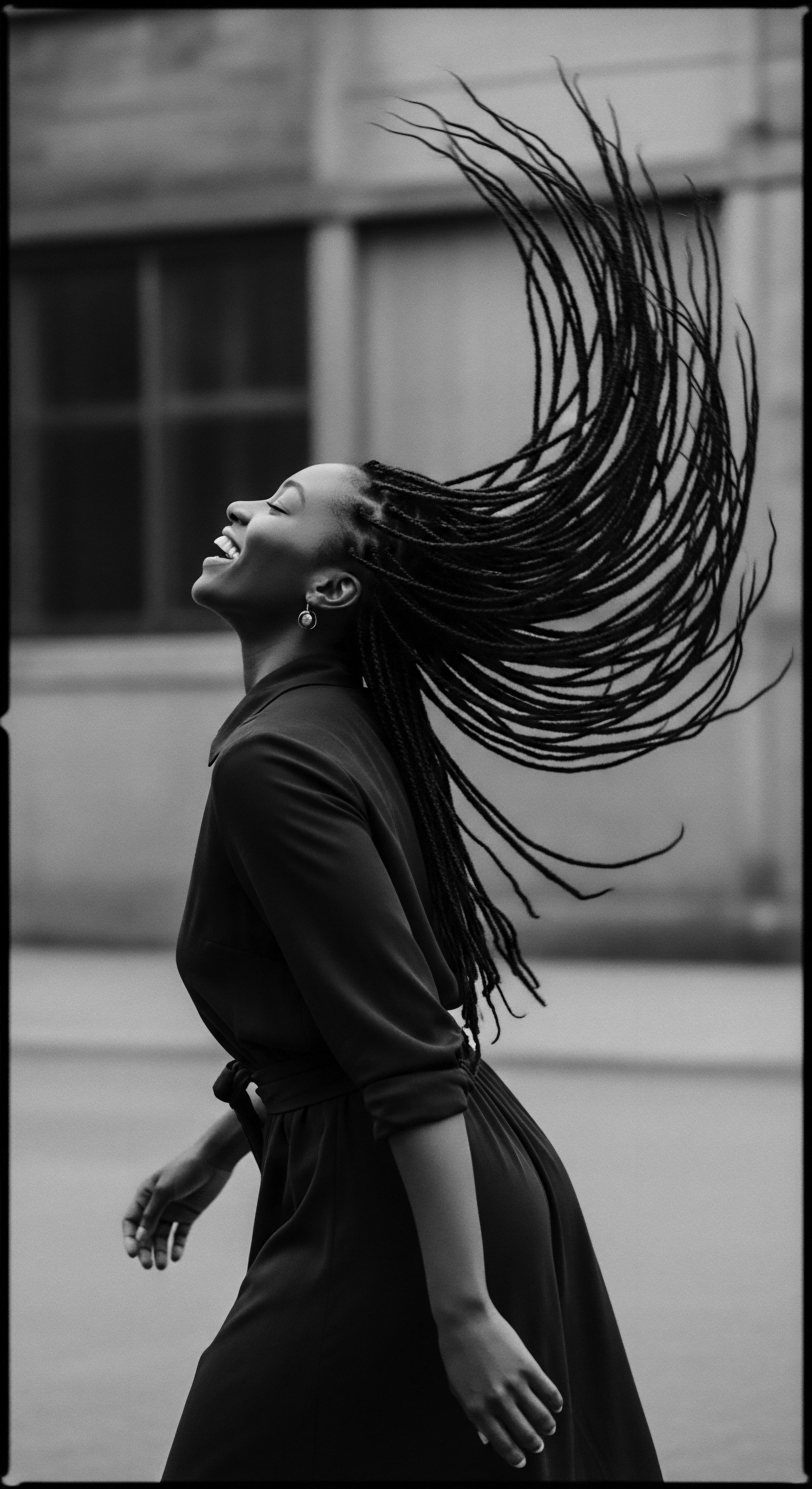
References
- Brand, M. (2018). The Science of Hair ❉ A Comprehensive Guide to Hair Biology and Hair Care. Academic Press.
- Johnson, W. R. (2013). Soul by Soul ❉ Life Inside the Antebellum Slave Market. Harvard University Press.
- Patton, M. (2006). Twisted ❉ My Dreadlock Chronicles. Amistad.
- Byrd, A. L. & Tharps, L. D. (2014). Hair Story ❉ Untangling the Roots of Black Hair in America. St. Martin’s Griffin.
- Russell, J. (2004). The Social Construction of Race and Ethnicity in the United States. Rowman & Littlefield Publishers.
- Sweet, R. (2003). The Caribbean ❉ A History of the Region and Its Peoples. University of Chicago Press.
- Gates, H. L. (2014). The African Americans ❉ Many Rivers to Cross. Penguin Press.
- Mercer, K. (1994). Welcome to the Jungle ❉ New Positions in Black Cultural Studies. Routledge.
- Hall, S. (1997). Representation ❉ Cultural Representations and Signifying Practices. Sage Publications.
- Hooks, b. (1992). Black Looks ❉ Race and Representation. South End Press.
